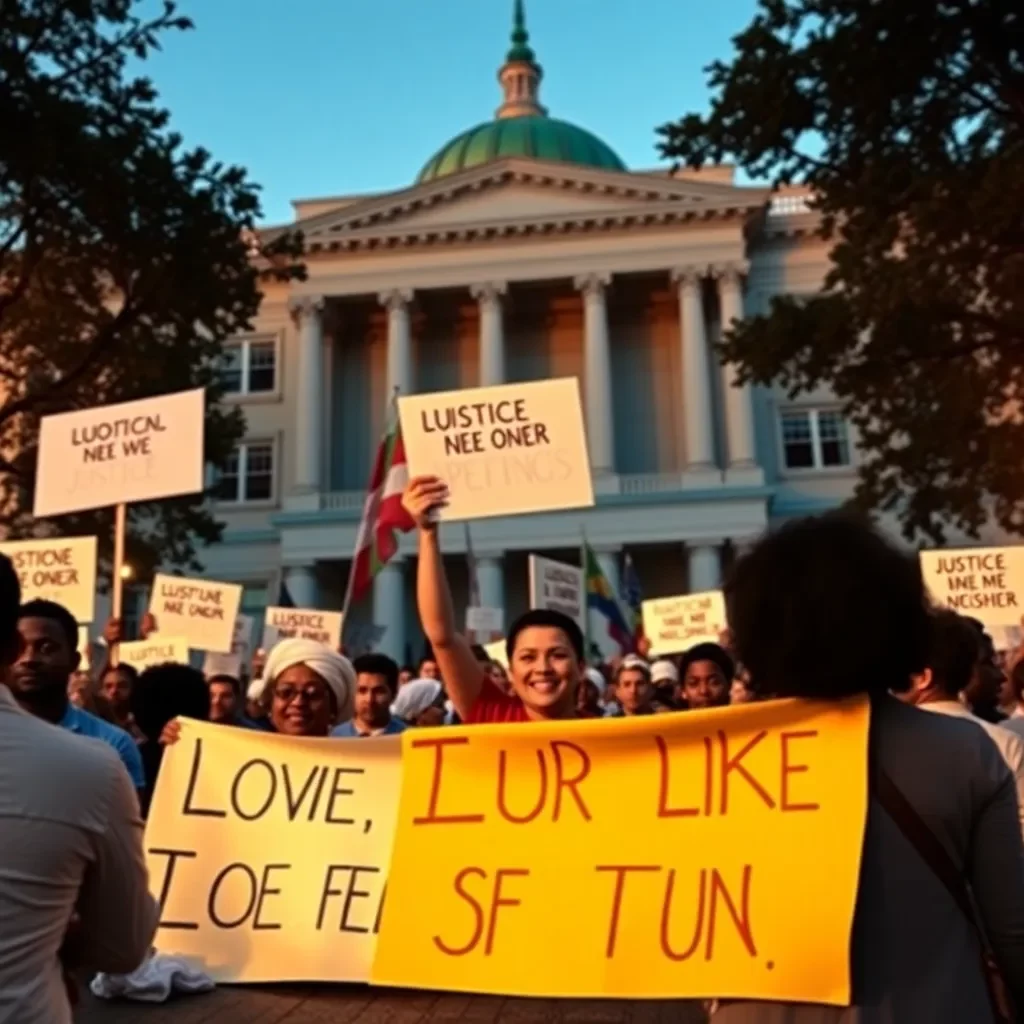Columbia, South Carolina: A Day to Remember
Columbia has witnessed many pivotal moments in its history, but one of the most significant events took place over 60 years ago. Recently, a remarkable ceremony marked a step toward justice for seven men who courageously stood up against segregation during the height of the Civil Rights Movement.
The Sit-In Movement
The spark that ignited the sit-in protests in Columbia happened back in March 1960, when two brave students, Simon Bouie and Talmadge Neal, decided to challenge the status quo by sitting down at Eckerd’s Drug Store on Main Street. They placed an order for lunch at a whites-only counter, an act that quickly led to their arrest for trespassing. Within days, five more students—Charles Barr, David Carter, Johnny Clark, Richard Counts, and Milton Greene—were also arrested at another location for the same bold act of defiance against segregation.
“I wonder how many of us you’re going to arrest tomorrow,” Bouie asked while being taken to a police car, a question that highlights the palpable fear that loomed over the protestors. Little did they know that their simple act would spiral into a larger movement across the nation, challenging not just local norms but also crucial laws.
Legal Battles and Courage
Their efforts caught the attention of renowned Civil Rights lawyer Matthew J. Perry, who would eventually lead their cases all the way to the U.S. Supreme Court, paving the way for justice and equality in the realm of public services. What started as a small group protesting at a lunch counter became a significant chapter in the broader narrative of the fight for equality. Bouie and Neal, serving as presidents of their respective Student Movement Associations, rallied over 200 students to stand in solidarity against Jim Crow laws, which enforced racial segregation in every corner of public life.
Despite the challenges they faced, including public backlash and physical barricades erected by white business owners, the students remained committed to their cause. On March 4, they temporarily suspended their protests, but that didn’t deter the ongoing struggle for justice.
A Day for Justice
Fast forward to this month, after decades of carrying the weight of their criminal records, Bouie, Barr, and the remaining members of their courageous group found themselves in a courtroom, a place that symbolizes both struggle and justice. In a heartwarming ceremony, Judge Robert Hood expunged their records, effectively clearing their names after all these years.
During the ceremony, Bobby Donaldson, Director of the Center for Civil Rights History and Research at the University of South Carolina, expressed the significance of this event, stating, “We gather today in this courtroom to mark not just a moment in legal history, but a profound act of justice and remembrance for our community.” Family members of the men who fought for equal rights, along with descendants and loved ones, filled the courtroom, remembering those who are no longer with us and celebrating their legacy.
Reflection and Moving Forward
As the ceremony concluded, many attendees reflected on the extraordinary impact the sit-ins had on not just Columbia, but the entire state of South Carolina and the nation. State Senator Darrell Jackson shared his excitement for this momentous occasion, stating, “I know the young men who sat at that lunch counter could never imagine a day when a Black solicitor could expunge the sit-in arrest records…”
It was a day not only to remember the past but also to celebrate the progress that has been made. The community, as well as the leaders of the movement, such as Rev. I. DeQuincey Newman, were remembered for their unwavering commitment to justice. The essence of their struggle lives on, inspiring current and future generations to continue fighting for equality.
In the words of Bouie, who reflected on their resolve, “We had a desire to fight for what was right and no one could turn us around.” The spirit of resilience and determination shown by these brave souls will always resonate within the fabric of Columbia, reminding us that the fight for justice and equality is ongoing.







